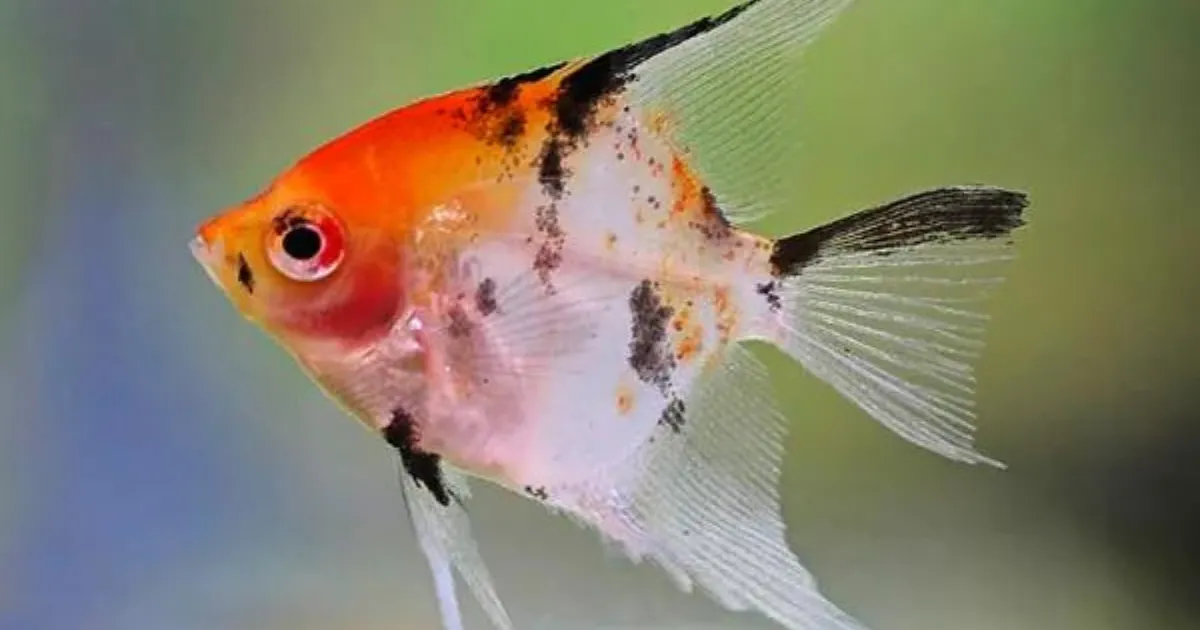Koi angelfish are a spectacular freshwater fish known for their vibrant color patterns resembling koi fish. With proper care and tank conditions, these angelfish can thrive for over a decade, showing off their graceful movements and striking colors. This beginner’s guide will cover everything you need to know about koi angel care including tank size, growth rate, diet, tank mates, and more.
Introduction.
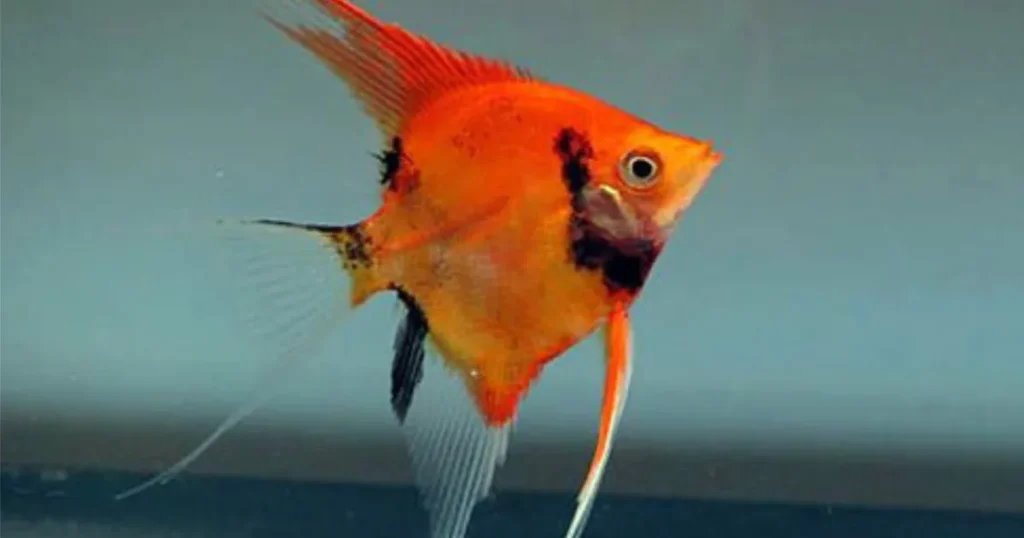
Koi angelfish are a variant of the popular freshwater angelfish species Pterophyllum scalare. Unlike the silver bodies of wild angelfish, koi have been selectively bred to develop bright orange, white, black, and red coloration. Their patterns and colors can vary significantly, making each fish unique.
While similar in most respects to regular angelfish, the koi color morph requires particular care and tank conditions to thrive. By understanding their needs, you can provide a healthy home to them and enjoy their beauty and active nature for years to come.
How Big Do Koi Angelfish Get: Size & Growth.
One of the first questions prospective owners have is: how big do koi angelfish get? On average, koi will reach about 6 inches in length when fully grown. Some may max out at closer to 5 inches while others can reach up to 7 inches in ideal tank conditions.
In the home aquarium, they exhibit relatively fast juvenile growth rates. They can reach 3 to 4 inches within their first 6 to 12 months when cared for properly. Their growth will gradually taper off as they near maturity around 18 months old.
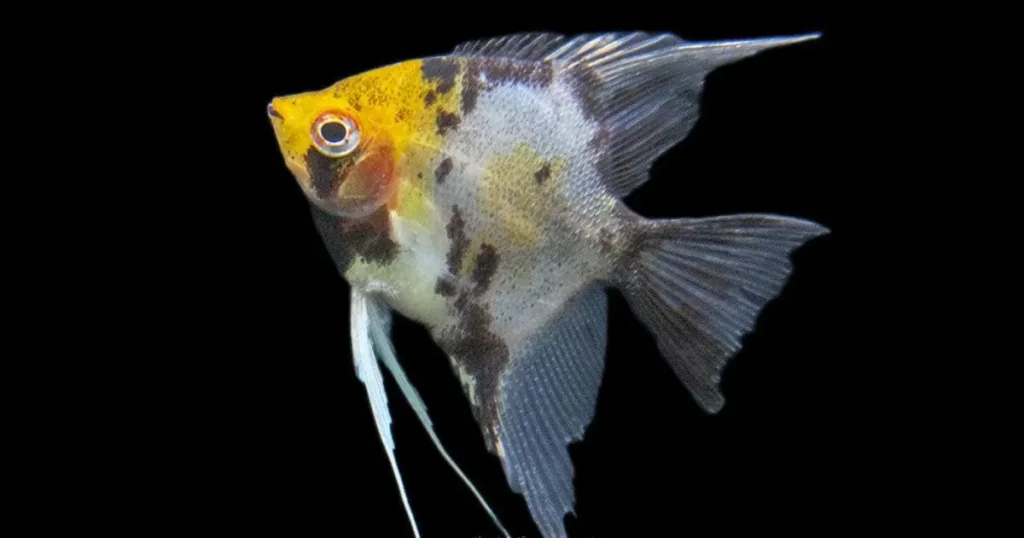
Maximizing growth potential requires providing the fish ample tank space, clean water, and a nutritious diet. Stunted growth can occur if the fish become overcrowded or malnourished during those critical early months.
Determining Proper Koi Angelfish Tank Size.
Given koi angelfish can grow quite large, it’s vital to provide them an adequately sized tank. But what is the minimum koi angelfish tank size?
For a pair of koi angelfish, a 29 gallon aquarium is typically recommended as the minimum tank size. However, a larger tank is always preferred. Aim for at least a 50 gallon tank, especially if you plan on adding more fish.
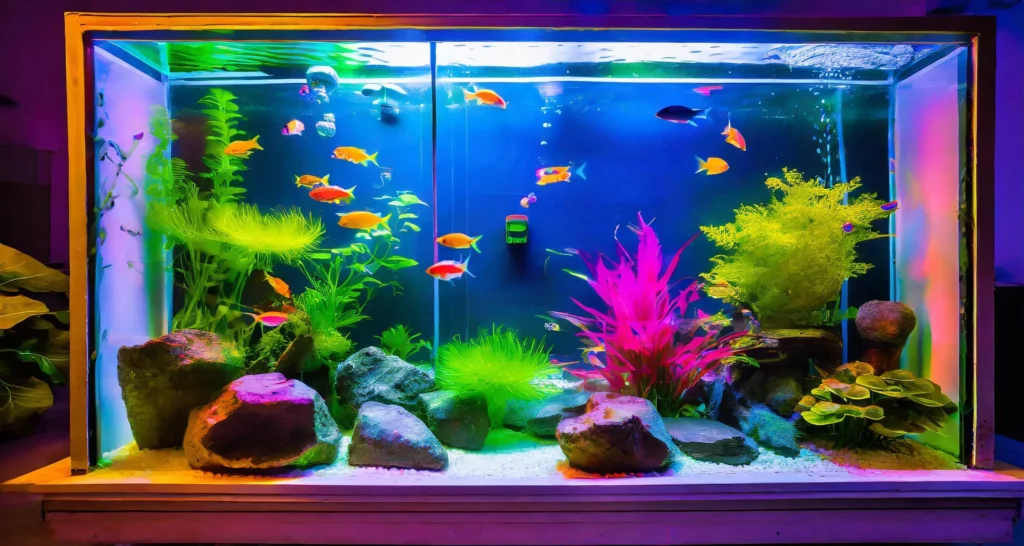
The extra swimming space allows koi angelfish to exhibit their natural behaviors. And diluted waste concentrations put less pressure on the filtration system. Make sure the tank is also tall enough to accommodate the height of their dorsal and anal fins.
If breeding koi angelfish, a 20 gallon tank can house a bonded pair. But they will likely need to be moved to a bigger tank as the fry grow. The parents may turn aggressive towards the babies if space becomes limited.
No matter the tank size, maximize horizontal swimming space while also providing sufficient water depth. Koi angelfish spend ample time cruising back and forth through the open water column.
Koi Angelfish Care: Habitat and Diet Needs.
Successfully keeping koi angelfish depends on recreating key aspects of their natural habitat in the Amazon river basin. This includes appropriate water conditions, tank décor, tank mates, and diet.
Koi angelfish thrive in soft, slightly acidic water. Ideal parameters are:
- Temperature 76-82°F
- pH 5.5-7.0
- Water hardness 2-12 dGH
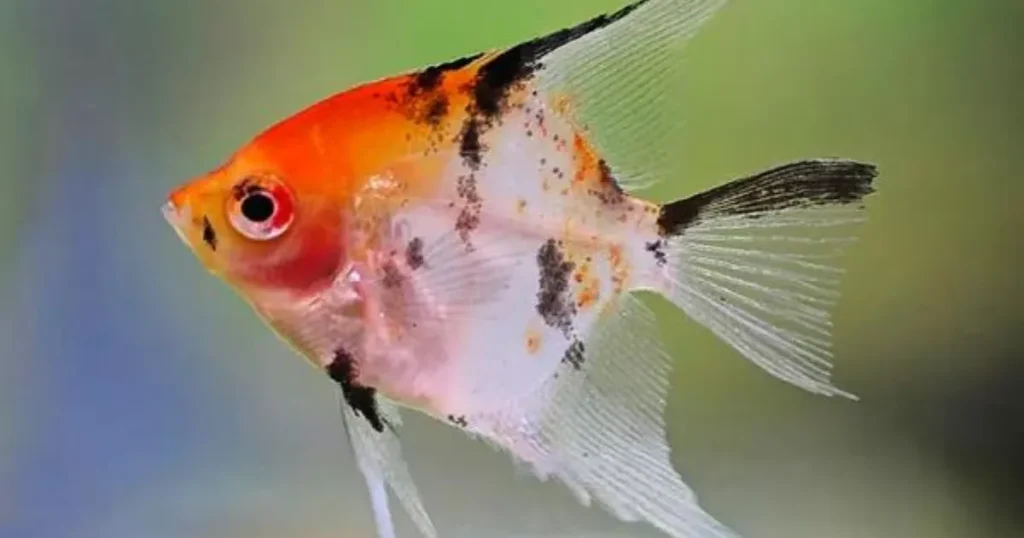
Perform regular partial water changes to prevent dissolved wastes from accumulating. Provide strong filtration rated for at least twice the tank volume.
Planted aquariums help recreate the heavily vegetated floodplains angelfish inhabit. Include broadleaf plants, floating plants, and driftwood to provide shaded areas and ambush sites. Open swimming space should also be available.
In the wild, angelfish are omnivores feeding on small crustaceans, insects, and plant matter. Try to replicate that varied diet in captivity. Feed a quality flake or pellet along with frozen and live foods like bloodworms, brine shrimp, and blackworms. Young angelfish also need higher protein levels to fuel rapid growth.
With the proper setup and nutrition, you can expect your koi angelfish to live upwards of 10-15 years in the home aquarium!
Read More About Angelfish tank Temperature…
Selecting Suitable Koi Angelfish Tank Mates.
A well-chosen community tank allows your koi to exhibit natural behaviors. But tank mate selection requires some care due to their potential for aggression. Here are some compatible fish species:
- Other angelfish
- Silver dollars
- Plecostomus catfish
- Larger tetras and barbs
- Gouramis
- Corydoras catfish
- Bristlenose plecos
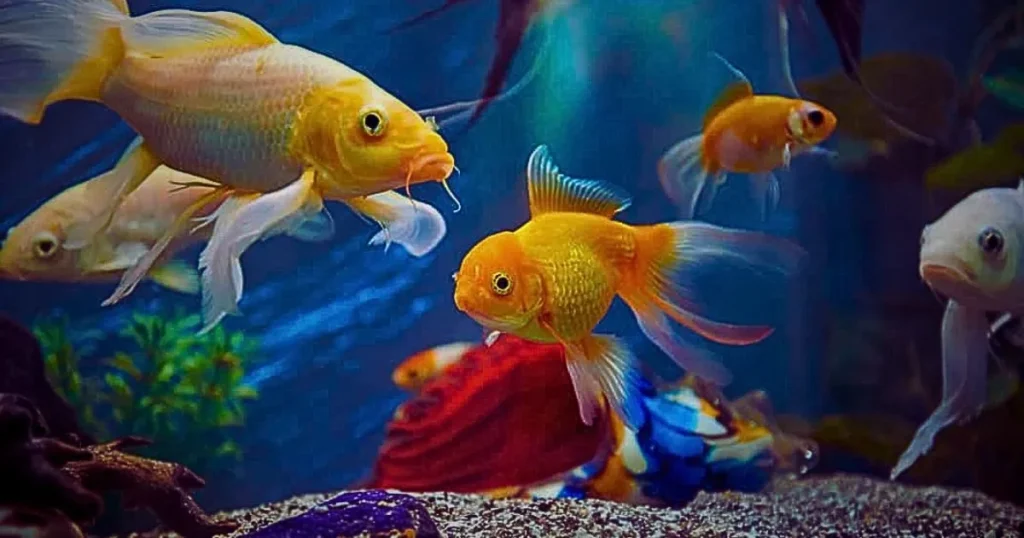
Avoid housing them with notoriously nippy species like tiger barbs. Also steer clear of fish small enough to be eaten. Introduce tank mates when young so all fish can grow up together and establish territories.
The key is choosing tank mates that won’t compete for the same spaces or resources. For example, bottom dwelling fish help utilize different areas of the tank. Providing plenty of hiding spots and line of sight breaks can also ease aggression.
With some strategic stocking choices, you can create a thriving angelfish community tank!
Read Complete Guide on Angelfish Tankmates…
Are They Aggressive?
Koi possess a degree of innate aggression that surfaces under certain conditions. Can koi angelfish be aggressive? Absolutely, but there are ways to curb that behavior in captivity.
Aggression most commonly occurs when:
- Tank is overcrowded
- Competing for limited tank resources
- Defending fry or breeding territory
- Establishing dominance hierarchies
Younger koi raised together normally adapt into a harmonious, non-aggressive community. Issues tend to arise once they start maturing and competing for mates and prime habitat areas.
If aggression becomes problematic, some solutions include:
- Adding more plants and decor to break up sight lines
- Rearranging decor to reset territorial boundaries
- Removing aggressors or victims
- Adding dither species like silver dollars to distract aggressors
- Keeping koi angelfish in pairs or small schools
While some nipping can be expected, excessive harassment necessitates action. With some tank adjustments, their aggression can be minimized.
Summary of Koi Angel Care Needs.
To recap, here are the keys to successfully keeping koi angelfish:
- Minimum 29 gallon tank for a pair, bigger is better
- Soft, slightly acidic water with temperatures from 76-82°F
- Plants, driftwood, open swimming space
- High quality diet with frozen and live foods
- Compatible, non-aggressive tank mates
- Groups of 4-6 to spread aggression
- Healthy, active juveniles around 1-2 inches long
- Quarantine and acclimate new fish carefully
- Partial water changes 15-20% weekly
Finding and Selecting Healthy Koi Fish.
Once your tank is fully cycled and ready, it’s time to pick out your koi! You can purchase juveniles from specialty fish stores, local breeders, or online retailers.
Look for active fish showing full, vivid coloration with no signs of disease or injury. Their body shape should appear robust, not overly skinny. Make sure fins are intact and not clamped tightly to the body.
The eyes should be clear and alert, not cloudy or bulging. Breathing should seem effortless without rapid gill movement. The area around the vent and fins should be clear of abnormalities.
Be wary of specimens hiding in a tank corner or staying isolated from the school. This could signal underlying health issues. When possible, request juveniles around 1-2 inches long which are heartier than tiny fry.
Expect to pay $10 to $25+ per fish depending on size, color patterns, and quality. Buying from a reputable source will help ensure you get healthy, high-grade specimens worth the investment.
Conclusion.
Koi angelfish present an exciting opportunity to add a splash of color and activity to your freshwater aquarium. Their intricate markings and graceful swimming will become a focal point of any community tank. While caring for these fish has its challenges, the payoff is tremendously rewarding. With some planning and research, you can succeed in keeping koi angelfish healthy and happy for years to come. We hope this beginner’s guide gives you the key information needed to start your koi angelfish journey!
FAQs.
How often should I feed koi angels?
Koi angelfish should be fed small amounts 1-2 times per day. Only provide enough food that they can consume within 2-3 minutes, and remove any leftovers to reduce waste buildup.
What water parameters are ideal for koi?
They prefer soft, slightly acidic conditions between 76-82°F, with a pH around 6.5-7.2 and a hardness of 2-12 dGH. Perform regular partial water changes.
Can I add tank mates with koi angelfish?
Yes, koi angelfish are suitable for community tanks when provided plenty of space. Choose tank mates of similar size and temperament like gouramis, silver dollars, cory cats. Avoid fin nippers.
Why is my koi angelfish aggressive towards tank mates?
Aggression often results from overcrowding, breeding stress, or competition over resources. Try rearranging the tank, adding more plants/hiding spots, or removing aggressors.
How can I get koi angelfish to breed?
Condition a proven pair with high quality foods. Introduce flat surfaces like leaves or a slate for them to spawn on. Maintain soft, acidic, clean water between 78-82°F to stimulate breeding.
Can I keep a single koi angelfish alone?
Koi angelfish do best kept in small groups. A single fish may become stressed without companions. If keeping one, provide lots of tank enrichment and interaction daily.

